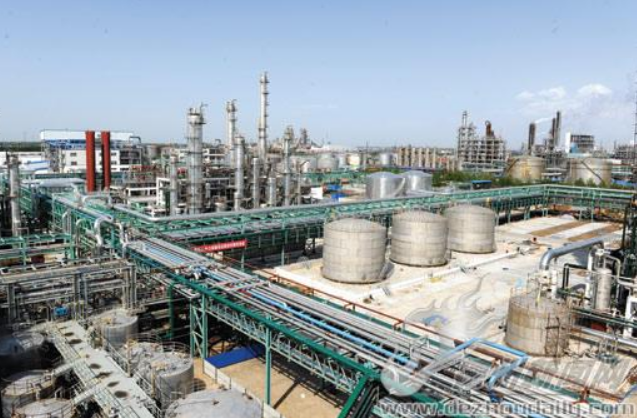What is MEG for PET?
MEG is the most common industrial diol which is used in manufacture of polyester fibre, fabrics and polyethylene terephthalate (PET) resin used for production of plastic bottles. Other industrial uses are as a coolant, heat transfer agent, antifreeze and a hydrate inhibitor in gas pipelines.

1. Understanding Monoethylene Glycol (MEG)
1.1 Definition and Chemical Properties
Monoethylene Glycol (MEG) is a clear, colorless liquid with a sweet taste. Chemically, it's a diol, or a type of alcohol with two hydroxyl groups. MEG is produced from ethylene oxide through a process known as hydrolysis. Its primary characteristics include high solubility in water and low volatility, making it an essential compound in various industrial processes.
1.2 Production Process
MEG is typically manufactured through the reaction of ethylene oxide with water. This process involves the following steps:
- Ethylene Oxide Synthesis: Ethylene oxide is produced from ethylene through a catalytic reaction.
- Hydrolysis: Ethylene oxide is then reacted with water to produce MEG.
2. MEG’s Role in PET Fiber Production
2.1 What is PET Fiber?
Polyethylene terephthalate (PET) is a type of polymer that is widely used in the production of fibers for textiles and packaging materials. PET fibers are known for their strength, durability, and resistance to wrinkles and shrinking.
2.2 MEG in PET Fiber Production
MEG is one of the two main raw materials used in the production of PET, the other being terephthalic acid (TPA). The process involves the polymerization of MEG and TPA to form PET. Here’s how MEG contributes to this process:
- Polymerization: MEG reacts with TPA in a polymerization reaction to produce PET. This reaction occurs under high temperature and pressure.
- Fiber Formation: The resulting PET polymer is then melted and extruded into fibers, which are further processed into various textile products.
3. Benefits of Using MEG in PET Fiber Production
3.1 Enhanced Fiber Quality
MEG helps in producing high-quality PET fibers that are strong, flexible, and resistant to environmental factors. This enhances the overall performance and longevity of the final products.
3.2 Cost-Effectiveness
MEG is relatively cost-effective compared to other chemicals used in fiber production. Its efficient production process and widespread availability contribute to its economic advantages.
3.3 Environmental Considerations
MEG is considered to be relatively environmentally friendly. It has a low environmental impact when compared to other chemicals used in industrial applications. Additionally, PET fibers made from MEG can be recycled, further supporting sustainability efforts.
4. Applications of PET Fibers Made with MEG
4.1 Textile Industry
In the textile industry, PET fibers are used to make a wide range of products, including clothing, upholstery, and carpets. Their durability and ease of maintenance make them a popular choice.
4.2 Packaging
PET fibers are also used in packaging materials such as bottles, containers, and films. Their strength and transparency are advantageous for packaging applications.
4.3 Industrial Uses
PET fibers have various industrial applications, including reinforcing materials for automotive parts and construction materials.
5. Potential Issues and Considerations
5.1 Quality Control
Ensuring consistent quality of MEG is crucial for the production of high-quality PET fibers. Variations in MEG purity can affect the properties of the final PET product.
5.2 Environmental Impact
While MEG itself is relatively benign, the production and disposal of PET fibers can have environmental implications. It's important to manage waste and recycling processes responsibly.
5.3 Safety Measures
MEG should be handled with care as it can be toxic if ingested or inhaled in large quantities. Proper safety protocols and equipment should be used when working with MEG.
6. Conclusion
Monoethylene Glycol (MEG) is a key ingredient in the production of PET fibers, contributing to the strength, durability, and cost-effectiveness of the final products. Its role in the polymerization process highlights its importance in various industries, including textiles and packaging. As with any chemical, proper handling and quality control are essential to ensure the benefits of MEG are fully realized while mitigating potential risks.
For more information on MEG and its applications in PET fiber production, or to find a reliable supplier, contact us today. Our team is here to provide expert advice and support for all your chemical needs.
FAQs
1. What is Monoethylene Glycol (MEG) used for?
- MEG is primarily used in the production of PET fibers, which are utilized in textiles, packaging, and various industrial applications.
2. How is MEG produced?
- MEG is produced by reacting ethylene oxide with water through a process called hydrolysis.
3. What role does MEG play in PET fiber production?
- MEG reacts with terephthalic acid to form PET, which is then used to create fibers for a variety of products.
4. Are there any environmental concerns associated with MEG?
- MEG itself is relatively environmentally friendly, but the production and disposal of PET fibers can have environmental impacts.
5. How can I find a supplier for MEG?
- For information on sourcing MEG or finding a reliable supplier, contact us today. Our team is available to assist with your needs.
















